- Home
- About Us
- The Team / Contact Us
- Books and Resources
- Privacy Policy
- Nonprofit Employer of Choice Award

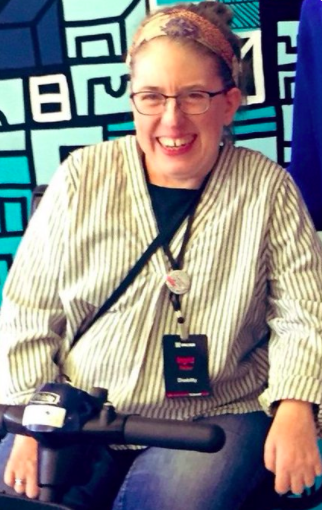
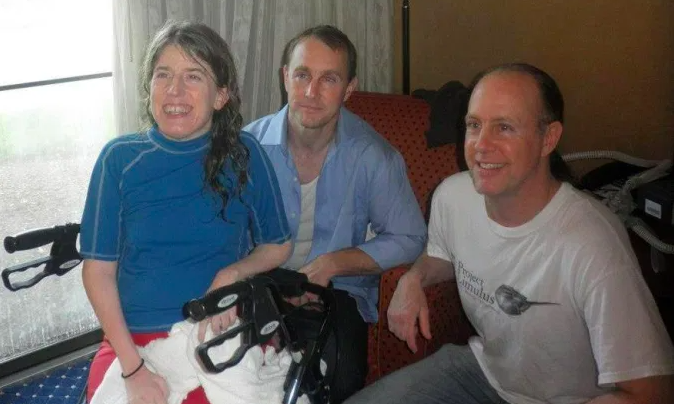
Long before I became a fundraiser with muscular dystrophy, I became a sibling to two nondisabled brothers. Stuff I Know: Access to funding is an equity issue. If it’s an honour for kids with disabilities to fund their own health care, then let’s have all kids be poster children. Also: While my lizard brain loves the BS that I, the disabled child, “taught my parents what love *really* is,” MDA telling siblings this during the Telethon is a lousy thing to do. As fundraisers and humans.
1. The Past is Prologue
I’ve had more than one person angrily ask how I dare criticize this year’s Telethon when it hasn’t even happened yet. Here’s how:
I know that part of every well-run fundraising event is what’s called its “post-mortem.” The team examines what worked, what went wrong, and (most importantly) how to keep the problems from reoccurring.
I’m worried because early promotion of this year’s Telethon indicates that their last post-mortem missed – or didn’t care about – one of their biggest problems: Jerry Lewis and his legacy of alienating the very people he claimed to serve.
Like most of fundraising, this ain’t rocket science: The best predictor of future behavior is past behavior and we have nearly 50 years of insults and stereotypes at the Telethon that were sanctioned by MDA’s culture and leadership.
This screenshot shows they’re clearly ok with Jerry Lewis’ misconduct.

Promoting the MDA Kevin Hart Kids Telethon by promising to “fondly remember the classic moments from the Jerry’s Kids Telethon,” and include “nostalgic footage” indicates that MDA’s fundraising culture has not really reckoned with its internal ableism.
2. Children – including disabled children – are people. (Again – not rocket science.)
CripTip: Don’t bring children on stage and talk about them in the 3rd-person and how they could die at any time. Please note this is equally bad regardless of whether you know that you’re telling the truth or lying about this PERSON.
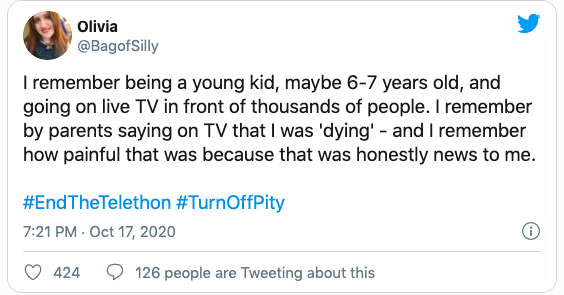
3. Literally de-facing the people you’re fundraising for sends the message that they’re headless props and not people with equal rights.
CripTip: Giant “GIVE NOW” banners shouldn’t be positioned in the lower half of a screen, where they will completely cover a wheelchair-using kid’s face. As MDA really ought to know.
4. Events, like all fundraising, should foster a culture of philanthropy that advances the mission and never undermines it. (See more on this at #5 and #10).
CripTip: Thinking critically about fundraising practices is good. Dare to ask questions about whether the Telethon’s fundraising messages and tactics advance or undermine the mission when they spread misinformation about neuro-muscular diseases (NMDs), reinforce stereotypes, and lower baseline expectations for a high quality of life.
Events are opportunities to model your organization’s values and build relationships that create a culture of philanthropy vs the Telethon’s transactional revenue generating.
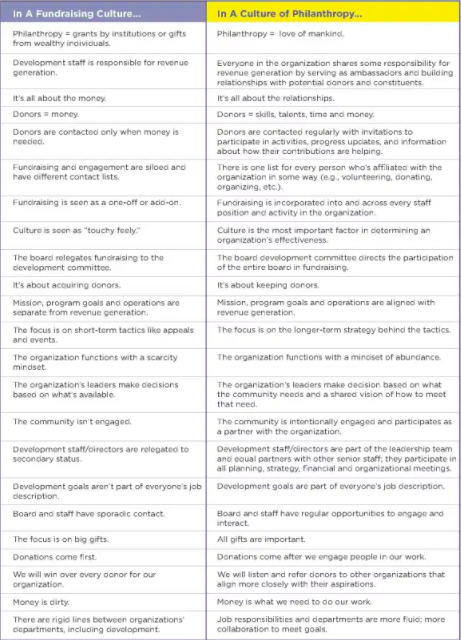
Courtesy Evelyn and Walter Haas, Jr. Fund. Chart comparing a Fundraising Culture vs a Culture of Philanthropy. MDA’s lack of disability cultural fluency and representation, medical-model limitations, preference for money over mission, and objectification of people with NMDs in their fundraising tactics indicate a culture of transactional fundraising. Complete text here
5. How you raise money says a lot about the cause you want to fund.
If MDA uses children as props and hurts their feelings, that behavior communicates that they don’t actually care about the cause of improving our lives. That puts MDA’s fundraising in conflict with its mission. (If fundraising were rocket science, this would be like aiming your missile squarely at mission control.)
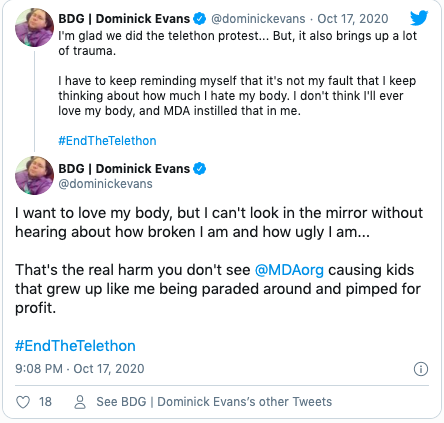
6. Representation matters in fundraising just as much as it does in program work.
If MDA‘s staff, leadership, and board are largely nondisabled and/or white, that defies, “No funding about us without us.” And – no surprise – this correlates with a lack of diverse representation in programs.
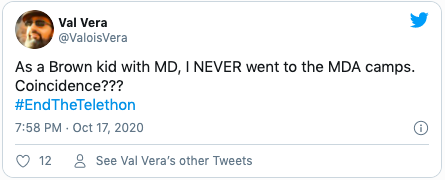
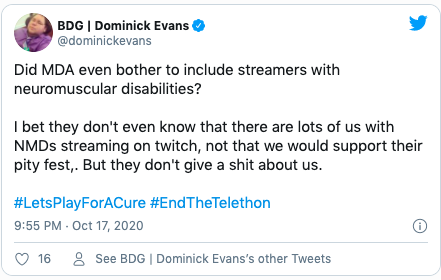
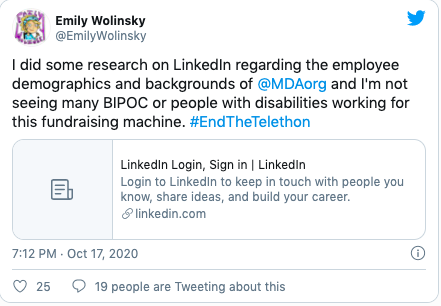
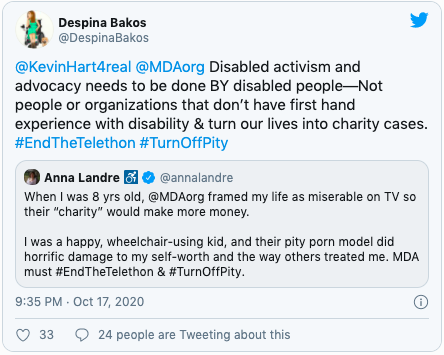
7. You can’t buy back respect.
Which is what the poor schlimazels doing MDA’s advocacy are tasked with, using these undefined grants, now that the schlemiels on the fundraising side have messed up again.
8. Credibility is everything in advocacy work. The Telethon is a disaster for MDA’s advocacy team.
My program colleagues doing advocacy work shouldn’t have to deal with negative attention drawn by my fundraising tactics and or worry about it impugning their credibility. I use to work for Equal Rights Advocates and, I promise you, if my fundraiser Luncheon’s messaging had included a keynote speaker who said, “My girls cannot go into the workplace,” (as Lewis said of his (sic) Kids) I would have been out of that particular workplace before the event ended.
9. You’re honest about what you do with donors’ money or what the organization does.
→ MDA has allegedly not abided by donors’ restrictions. This is…bad.
“Also alarming to the watchdog was the MDA’s self-reporting that it had borrowed from donor-restricted funds to cover operating costs.” –The Hollywood Reporter
CripTip: Donors will leave you when they find out you haven’t been a trustworthy steward of their gifts.
→ Most of what MDA currently does is promote access to research participation and diagnosis. This is…not the impression the Telethon will give you, regarding its clinical services.
MDA’s “health access” work is really more about clinical researchers having access to people like me. Which is fine – but MDA needs to be clear with the public that they don’t provide medical care, per se, supports, or equipment, and have not for decades. To some people with NMDs, this also raises questions of judgement in setting priorities.

Donors also want candor: MDA should tell them they provide diagnoses but referrals only for care, treatment, services, and equipment.
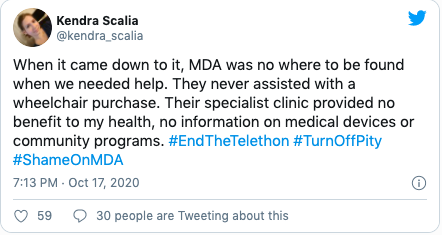
10. Money is not more important than mission.
Fundraisers need to understand that money is the measure, not the goal, of our work. Advancing the mission is our goal. “The end justifies the means” is a substandard fundraising strategy that requires accountability beyond counting the money. Especially when the means include frightening children and allowing others to be excluded by the organization.
CripTip: Build systems of accountability for fundraising practices into your organizational culture, like compensated leadership groups with authority instead of advisory groups that are expected to provide unpaid labor and denied decision-making power.

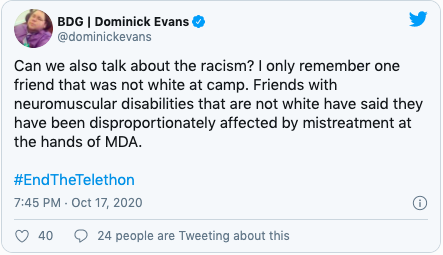
BONUS! Stuff I Ask As a Fundraiser With Muscular Dystrophy
→ Are any adults with NMD leading the decision-making regarding MDA’s fundraising culture and the Telethon, in particular?
→ Is having children do the Telethon’s fundraising labor again this year MDA’s nod to National Disability Employment Access Month (NDEAM)? Because if so, it’s right in line with Jerry Lewis claiming, “My kids cannot go into the workplace,” on LABOR DAY.
→ Does MDA have a consent plan for ensuring disabled children participating in the Telethon are not expected to allow strangers to touch their bodies as part of obtaining money for their health care?
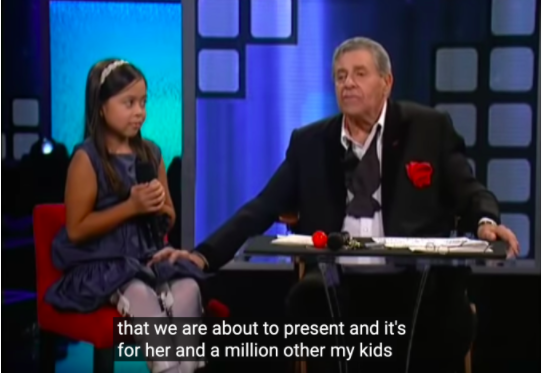
In 2020, we need to understand this 2010 image in terms of consent as much as we do its financial transparency and fundraising ethics. The MDA needs to end their transactional narrative in which disabled children must exchange strangers touching them to obtain funding for their health care.
With thanks to everyone’s brilliance in the 10/17/20 #EndTheTelethon Twitter protest and to Dominick Evans for leading our response, which you can get in on until October 24, 2020, the day of the Muscular Dystrophy Association’s MDA Kevin Hart Kids Telethon. There’s lots of great writing about problems with the Telethon’s charity model but this post is from the fundraiser’s point of view, as much as it is from a community members.
Ingrid Tischer is fundraiser who writes A Crip in Philanthropy (CRIP), an occasional column about the realities of working in the philanthropic sector as a white, disabled fundraiser for cross-disability advocacy. They are the author’s private opinions about physical and attitudinal barriers to success and opportunities to contribute structural ableism. She is currently the Director of Development for Disability Rights Education and Defense Fund (DREDF)
Cover image by Getty Images from The Disability Collection